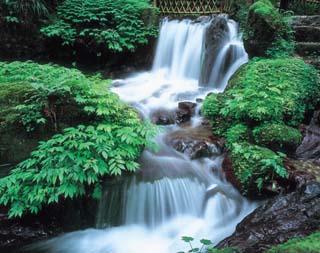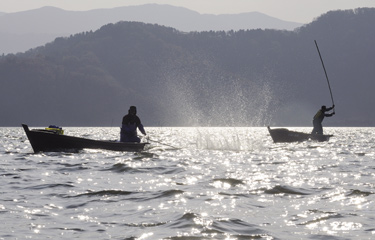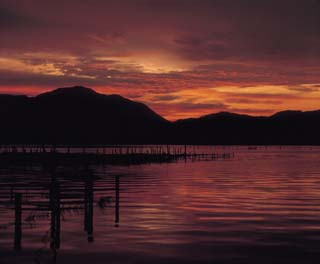The source of these pure waters is the green earth, including Mount Sanjusangen.
Since the Jomon period, we, along with all living things, have lived among this blessing of precious nature, and have harmoniously nurtured each other’s lives.
The principles of co-existence and cyclicality that our pure water and green earth have long spoken of – shine with the sea in the summer, welcome the crops with the mountain in autumn, endure with the seeds in winter, dance with the plum blossoms in spring – however convenient our lifestyles become, we will never forget these principles.
Strengthening our mutual bond and protecting the nature and environment of Wakasa is our mission that only we who have been entrusted with the future of this town can fulfill. We hereby declare that we are conscious of this mission, that we will love nature, that we will nurture the earth, and that we will continue to walk forward with all living things.
3 Activities of the case study
3.1 Preservation activities of (Satochi-)Satoyama
To promote the preservation of Satochi-Satoyama and wetlands, the 3 parties of Fukui Prefecture, Wakasa Town, and local environmental preservation groups formed a Biodiversity conservation agreement, and support the preservation activities groups.
Environmental study events are also held by the environmental preservation groups.
■ Events in the wetlands covered under the preservation agreement
・Eliminating the invasive species, the American bullfrog
・Revitalizing unused rice fields in part of the wetlands, planting rice, and harvesting rice
・Species observation tour for local residents and elementary school students
Observers were able to see many endangered species such as Ranaporosa (Daruma pond frog)、Lefua echigonia (Japanese eight-barbelloach)、and Oryzias latipes (Japanese ricefish) in their natural habitat.
3.2 Environmental Partnership Organizations
We established the Wakasa Town Environmental Partnership Conference, organized of various groups in the town, promote the town’s Basic Environmental Plan, and are planning educational activities by the groups that make up this partnership.
3.3 Approach to Nature Restoration of the Five Lakes of Mikata
The Five Lakes of Mikata is the term for 5 lakes that extend from Wakasa Town into neighboring Mihama Town. Because each lake has different salinity, different species inhabit each lake, and contribute to the diversity and variety of the lake environment. Within this environment, the existence of valuable fish such as Opsariichthys uncirostris, Acheilognathus cyanostigma (striped bitterling), and Gnathopogon elongates forms a foundation for registration to the Ramsar Convention.





